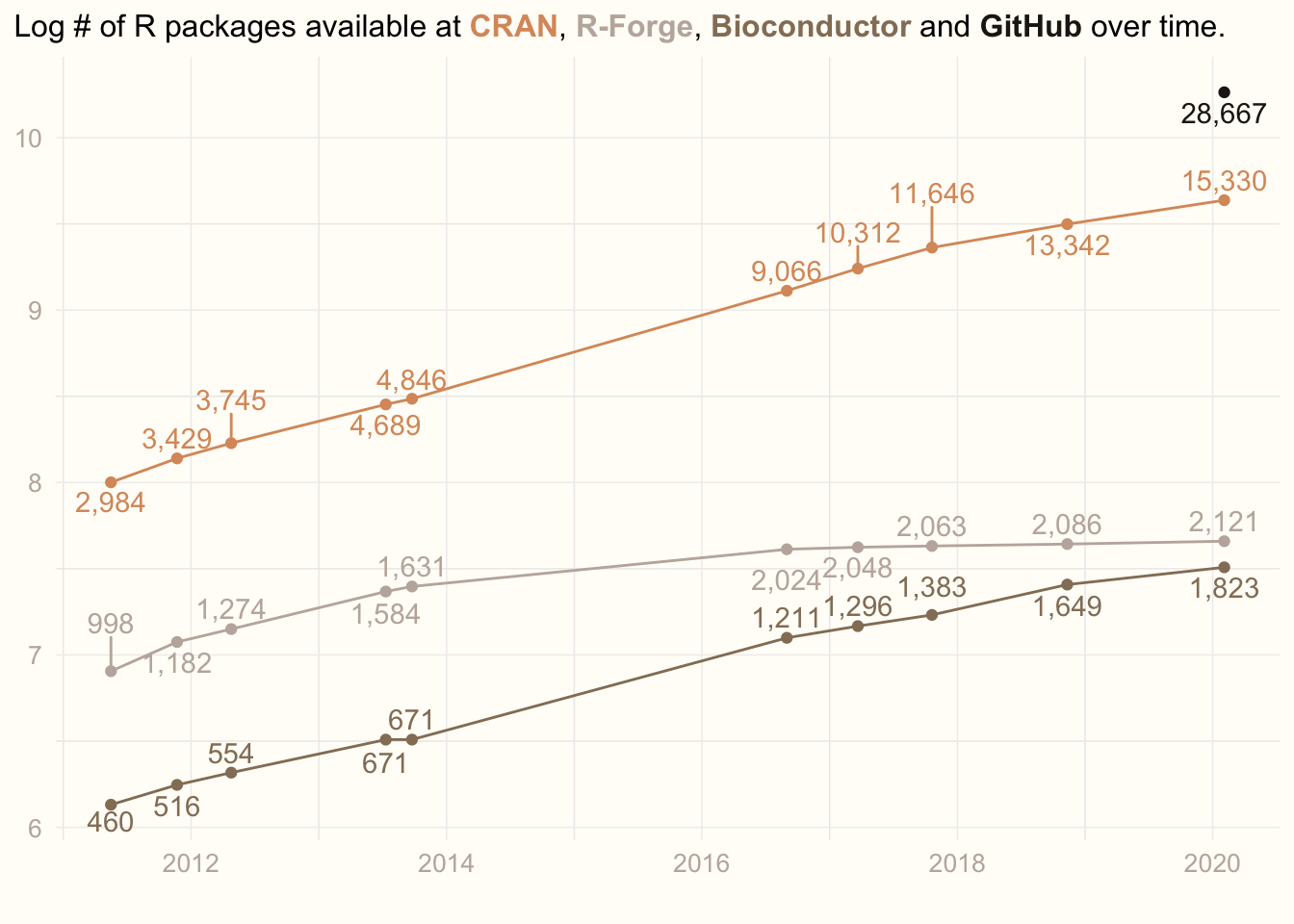Publications
Stuff I have published
Publications
[1] M. Arendt, A. Ambrosen, T. Fall, et al. “The ABCC4 gene is associated with pyometra in golden retriever dogs”. In: Scientific reports 11.1 (2021), pp. 1-11.
[2] M. J. Christmas, J. C. Jones, A. Olsson, et al. “Genetic barriers to historical gene flow between cryptic species of alpine bumblebees revealed by comparative population genomics”. In: Molecular Biology and Evolution (2021).
[3] M. J. Christmas, J. C. Jones, A. Olsson, et al. “A genomic and morphometric analysis of alpine bumblebees: ongoing reductions in tongue length but no clear genetic component”. In: bioRxiv (2021).
[4] M. J. Christmas, J. C. Jones, A. Olsson, et al. “Genome sequencing and morphometric analysis of alpine bumblebees experiencing climate change reveal ongoing phenotypic shifts and a lack of population structure”. In: bioRxiv (2021).
[5] A. C. Raclariu-Manolică, J. A. Anmarkrud, M. Kierczak, et al. “DNA Metabarcoding for Quality Control of Basil, Oregano, and Paprika”. In: Frontiers in plant science 12 (2021).
[6] T. L. Thanh, J. Norskov, L. P. Perez, et al. “FOXO1 and FOXO3 cooperatively regulate innate lymphoid cell development”. In: bioRxiv (2021).
[7] J. Von Seth, N. Dussex, D. Díez-del-Molino, et al. “Genomic insights into the conservation status of the world’s last remaining Sumatran rhinoceros populations”. In: Nature communications 12.1 (2021), pp. 1-11.
[8] E. Lord, N. Dussex, M. Kierczak, et al. “Pre-extinction demographic stability and genomic signatures of adaptation in the woolly rhinoceros”. In: Current Biology 30.19 (2020), pp. 3871-3879.
[9] M. Montoliu-Nerin, M. Sánchez-García, C. Bergin, et al. “Building de novo reference genome assemblies of complex eukaryotic microorganisms from single nuclei”. In: Scientific reports 10.1 (2020), pp. 1-10.
[10] K. Tengvall, K. Bergvall, M. Olsson, et al. “Transcriptomes from German shepherd dogs reveal differences in immune activity between atopic dermatitis affected and control skin”. In: Immunogenetics 72.5 (2020), pp. 315-323.
[11] N. Rafati, J. Hoglund, M. Kierczak, et al. “Analysing the joint effect of rare and common variants on human traits, using whole-genome sequencing data and a gene-based approach, increases the power to identify genetic effects”. In: EUROPEAN JOURNAL OF HUMAN GENETICS. Vol. 27. NATURE PUBLISHING GROUP MACMILLAN BUILDING, 4 CRINAN ST, LONDON N1 9XW, ENGLAND. 2019, pp. 1779-1779.
[12] S. Sakthikumar, I. Elvers, J. Kim, et al. “SETD2 is recurrently mutated in whole-exome sequenced canine osteosarcoma”. In: Cancer research 78.13 (2018), pp. 3421-3431.
[13] M. E. Pettersson, M. Kierczak, M. S. Almén, et al. “A Model-Free Approach for Detecting Genomic Regions of Deep Divergence Using the Distribution of Haplotype Distances”. In: bioRxiv (2017), p. 144394.
[14] M. Tatjewski, M. Kierczak, and D. Plewczynski. “Predicting post-translational modifications from local sequence fragments using machine learning algorithms: Overview and best practices”. In: Prediction of Protein Secondary Structure (2017), pp. 275-300.
[15] K. Höglund, A. Lequarré, I. Ljungvall, et al. “Effect of breed on plasma endothelin-1 concentration, plasma renin activity, and serum cortisol concentration in healthy dogs”. In: Journal of veterinary internal medicine 30.2 (2016), pp. 566-573.
[16] M. Olsson, M. Kierczak, . Karlsson, et al. “Absolute quantification reveals the stable transmission of a high copy number variant linked to autoinflammatory disease”. In: BMC genomics 17.1 (2016), pp. 1-9.
[17] M. Podell, H. Volk, M. Berendt, et al. “477 2015 ACVIM Small Animal Consensus Statement on Seizure Management in Dogs”. In: CONSENSUS STATEMENT 30.2 (2016).
[18] K. Tengvall, S. Kozyrev, M. Kierczak, et al. “Multiple regulatory variants located in cell type-specific enhancers within the PKP2 locus form major risk and protective haplotypes for canine atopic dermatitis in German shepherd dog”. In: BMC Genetics 17.97 (2016).
[19] L. Andersson, M. Kierczak, V. Scholz, et al. “10. Exploring weight data on over 100,000 Swedish dogs of various breeds”. In: Acta Veterinaria Scandinavica 57.1 (2015), p. P13.
[20] P. Arner, C. Argo, I. S. Poromaa, et al. “Animal Obesity-causes, consequences and comparative aspects: meeting abstracts”. In: Acta Veterinaria Scandinavica 57.1 (2015), p. O10.
[21] M. Bianchi, S. Dahlgren, J. Massey, et al. “A multi-breed genome-wide association analysis for canine hypothyroidism identifies a shared major risk locus on CFA12”. In: PLoS One 10.8 (2015), p. e0134720.
[22] S. K. Forsberg, M. Kierczak, I. Ljungvall, et al. “The shepherds’ tale: a genome-wide study across 9 dog breeds implicates two loci in the regulation of fructosamine serum concentration in Belgian shepherds”. In: PloS one 10.5 (2015), p. e0123173.
[23] K. Höglund, A. Lequarré, I. Ljungvall, et al. “BREED DIFFERENCES IN CONCENTRATIONS OF NEUROENDOCRINES AND CORTISOL IN HEALTHY DOGS: ESVC-O-21”. In: Journal of Veterinary Internal Medicine 29.1 (2015).
[24] M. Kierczak, J. Jabłońska, S. K. Forsberg, et al. “Cgmisc: Enhanced genome-wide association analyses and visualization”. In: Bioinformatics 31.23 (2015), pp. 3830-3831.
[25] M. Olsson, K. Tengvall, M. Frankowiack, et al. “Correction: Genome-Wide Analyses Suggest Mechanisms Involving Early B-Cell Development in Canine IgA Deficiency”. In: Plos one 10.9 (2015), p. e0138405.
[26] M. Olsson, K. Tengvall, M. Frankowiack, et al. “Genome-wide analyses suggest mechanisms involving early B-cell development in canine IgA deficiency”. In: PloS one 10.7 (2015), p. e0133844.
[27] K. Tengvall, M. Kierczak, K. Bergvall, et al. “Correction: Genome-Wide Analysis in German Shepherd Dogs Reveals Association of a Locus on CFA 27 with Atopic Dermatitis”. In: PLoS genetics 11.12 (2015), p. e1005740.
[28] G. Andersson, K. Bergvall, A. Hedhammer, et al. Methods for assessing the risk of canine atopic dermatitis. 2014.
[29] K. Höglund, A. S. Lequarré, I. Ljungvall, et al. “Breed differences in concentrations of circulating vasoactive peptides and cortisol in healthy dogs”. In: Journal of veterinary internal medicine 28 (2014), pp. 451-457.
[30] K. Höglund, A. Lequarré, I. Ljungvall, et al. “Breed Differences in Concentrations of Neuroendocrines and Cortisol in Healthy Dogs”. In: Journal of Veterinary Internal Medicine (2014).
[31] I. Saha, T. Klingström, S. Forsberg, et al. “Evaluation of machine learning algorithms on protein-protein interactions”. In: Man-Machine Interactions 3. Springer, Cham, 2014, pp. 211-218.
[32] I. Saha, J. Zubek, T. Klingström, et al. “Ensemble learning prediction of protein-protein interactions using proteins functional annotations”. In: Molecular BioSystems 10.4 (2014), pp. 820-830.
[33] K. Sjöstrand, G. Wess, I. Ljungvall, et al. “Breed differences in natriuretic peptides in healthy dogs”. In: Journal of veterinary internal medicine 28.2 (2014), pp. 451-457.
[34] M. Ahsan, X. Li, A. E. Lundberg, et al. “Identification of candidate genes and mutations in QTL regions for chicken growth using bioinformatic analysis of NGS and SNP-chip data”. In: Frontiers in genetics 4 (2013), p. 226.
[35] S. Forsberg, M. Kierczak, A. Merveille, et al. “The Belgian Shepherd’s tale genome-wide study across 9 dog breeds reveals an association of fructosamine concentration to a locus in Belgian Shepherds”. In: Canine Feline Genomics conference 2013. 2013.
[36] X. Li, M. Kierczak, X. Shen, et al. “PASE: a novel method for functional prediction of amino acid substitutions based on physicochemical properties”. In: Frontiers in genetics 4 (2013), p. 21.
[37] R. M. Nelson, M. Kierczak, and Ö. Carlborg. “Higher order interactions: detection of epistasis using machine learning and evolutionary computation”. In: Genome-Wide Association Studies and Genomic Prediction. Humana Press, Totowa, NJ, 2013, pp. 499-518.
[38] R. M. Nelson, C. Nettelblad, M. E. Pettersson, et al. “MAPfastR: quantitative trait loci mapping in outbred line crosses”. In: G3: Genes, Genomes, Genetics 3.12 (2013), pp. 2147-2149.
[39] M. Olsson, L. Tintle, M. Kierczak, et al. “Thorough investigation of a canine autoinflammatory disease (AID) confirms one main risk locus and suggests a modifier locus for amyloidosis”. In: PloS one 8.10 (2013), p. e75242.
[40] A. Richter-Boix, M. Quintela, M. Kierczak, et al. “Fine-grained adaptive divergence in an amphibian: genetic basis of phenotypic divergence and the role of nonrandom gene flow in restricting effective migration among wetlands”. In: Molecular ecology 22.5 (2013), pp. 1322-1340.
[41] K. Tengvall, M. Kierczak, K. Bergvall, et al. “Genome-wide analysis in German shepherd dogs reveals association of a locus on CFA 27 with atopic dermatitis”. In: PLoS genetics 9.5 (2013), p. e1003475.
[42] M. Owczarek-Lipska, B. Lauber, V. Molitor, et al. “Two loci on chromosome 5 are associated with serum IgE levels in Labrador retrievers”. In: PloS one 7.6 (2012), p. e39176.
[43] M. Dramiński, M. Kierczak, A. Nowak-Brzezińska, et al. “The Monte Carlo feature selection and interdependency discovery is unbiased”. In: Control and Cybernetics 40 (2011), pp. 199-211.
[44] M. Draminski, M. Kierczak, J. Koronacki, et al. Advances in Machine Learning. 2010.
[45] M. Dramiński, M. Kierczak, J. Koronacki, et al. “Monte Carlo feature selection and interdependency discovery in supervised classification”. In: Advances in Machine Learning II. Springer, Berlin, Heidelberg, 2010, pp. 371-385.
[46] M. Kierczak, M. Dramiński, J. Koronacki, et al. “Computational analysis of molecular interaction networks underlying change of HIV-1 resistance to selected reverse transcriptase inhibitors”. In: Bioinformatics and biology insights 4 (2010), pp. BBI-S6247.
[47] M. Kierczak, K. Ginalski, M. Dramiñski, et al. “A rough set-based model of HIV-1 reverse transcriptase resistome”. In: Bioinformatics and biology insights 3 (2009), pp. BBI-S3382.
[48] M. Kierczak, W. R. Rudnicki, and J. Komorowski. “Construction of Rough Set-Based Classifiers for Predicting HIV Resistance to Nucleoside Reverse Transcriptase Inhibitors”. In: Granular Computing: At the Junction of Rough Sets and Fuzzy Sets. Springer, Berlin, Heidelberg, 2008, pp. 249-258.
[49] W. R. Rudnicki, M. Kierczak, J. Koronacki, et al. “A statistical method for determining importance of variables in an information system”. In: International Conference on Rough Sets and Current Trends in Computing. Springer, Berlin, Heidelberg. 2006, pp. 557-566.
Wikipedia Contributions
In chronological order
- Eduardo Galeano (pl)
- Gnawa (pl)
- Teoria zbiorów przybliżonych (pl)
- Kroswalidacja stratyfikowana (pl, contribution to the main article)
- Bruno Liljefors (pl)
- Wiolaceina (pl)
- Aguaviva (pl)



